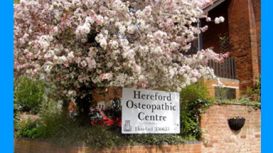
Hereford Osteopathic Centre
Alternative Medicine Specialist in Hereford, Herefordshire, HR2 7JW
About the Business
The Hereford Osteopathic Centre was established in Hereford in 1975 by the internationally known osteopath Nicholas Handoll. He opened the Ross-on-Wye Clinic of Osteopathy and Complementary Medicine some eight years later.
These practices have become centres of development for osteopaths for over 30 years, particularly in the field of what has become known as Cranial Osteopathy. Many prominent osteopaths developed their careers at the Hereford Osteopathic Centre.
Whatever your health problem we will give you time to talk it through. We will endeavour to identify the cause of the problem, not just alleviate symptoms, and work with your body to help restore health naturally. For more details, follow the link at the top through Osteopathy to What do people come with?
The practice is particularly known for Cranial Osteopathy. People of all ages come to see us, from newborn infants brought in under two weeks of age, to the elderly well into their 90s. For more details concerning infants and children follow the link at the top through Osteopathy to Infants and Children.
Business Services

What is Osteopathy?
Osteopathy is a philosophy of healthcare which was developed by Dr Andrew T. Still, a physician in Middle West of America in the 1870s. It is as old as modern medicine. Dr Still became disillusioned with the medical treatment practised at the time, which was often as hazardous to the patient as the disease itself. It was not Still's intention to found a new profession. He wanted to reform the existing system.
Location & Hours

70 Belmont Road
Write a Review
-
Email Address
-
Office
Hereford Osteopathic Centre
-
Get Directions
70 Belmont Road, Hereford, HR2 7JW
-
Phone

